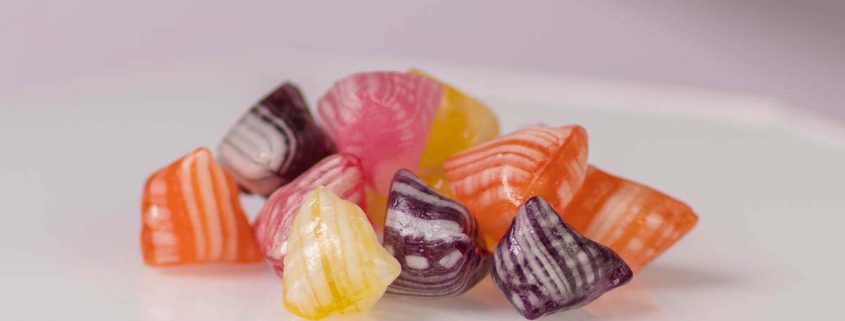Always striped with white, the Carpentras berlingot is recognizable among all.
Tradition has it that it was made for the first time, caramel-based, under the pontificate of Clement V, the first pope of Avignon, by one of his cooks called Sylvester.
What is more certain is that originally it was a medicinal product sold as such by apothecaries. The first who managed to get him out of these shops was François Pascal Long, a pastry-confectioner from Carpentras, who in 1844 used candied fruit syrup.
Gustave Eysséric, in 1851, gave a new impetus by industrializing the manufacture and marketing all over the world his berlingots with peppermint. After a pause during the Second World War due to the shortage of sugar, production rebounded in 1962.
Five stages are necessary for the production of the berlingot. First cooking, followed by stretching and mixing, then comes the cutting in the ‘berlingotière’ and placing on racks before packaging. Carpentras’s berlingot then has a small pyramid shape about one centimeter in size. The concentration of the syrup gives it a hard and translucent structure.
The confectioners present it in different colors that indicate its taste: red for mint, green for anise, yellow for lemon and orange for orange. Currently new fragrances complete this range: coffee, chocolate, melon, cherry, lavender, Carpentras strawberry, mandarin, violet, apple, raspberry and even cola and carambar. The characteristic of the Carpentras berlingot is to be always striped with white and these streaks can reach the number of forty. They are the result of the addition of neutral cooked sugar long beat to give it whiteness and opacity.



